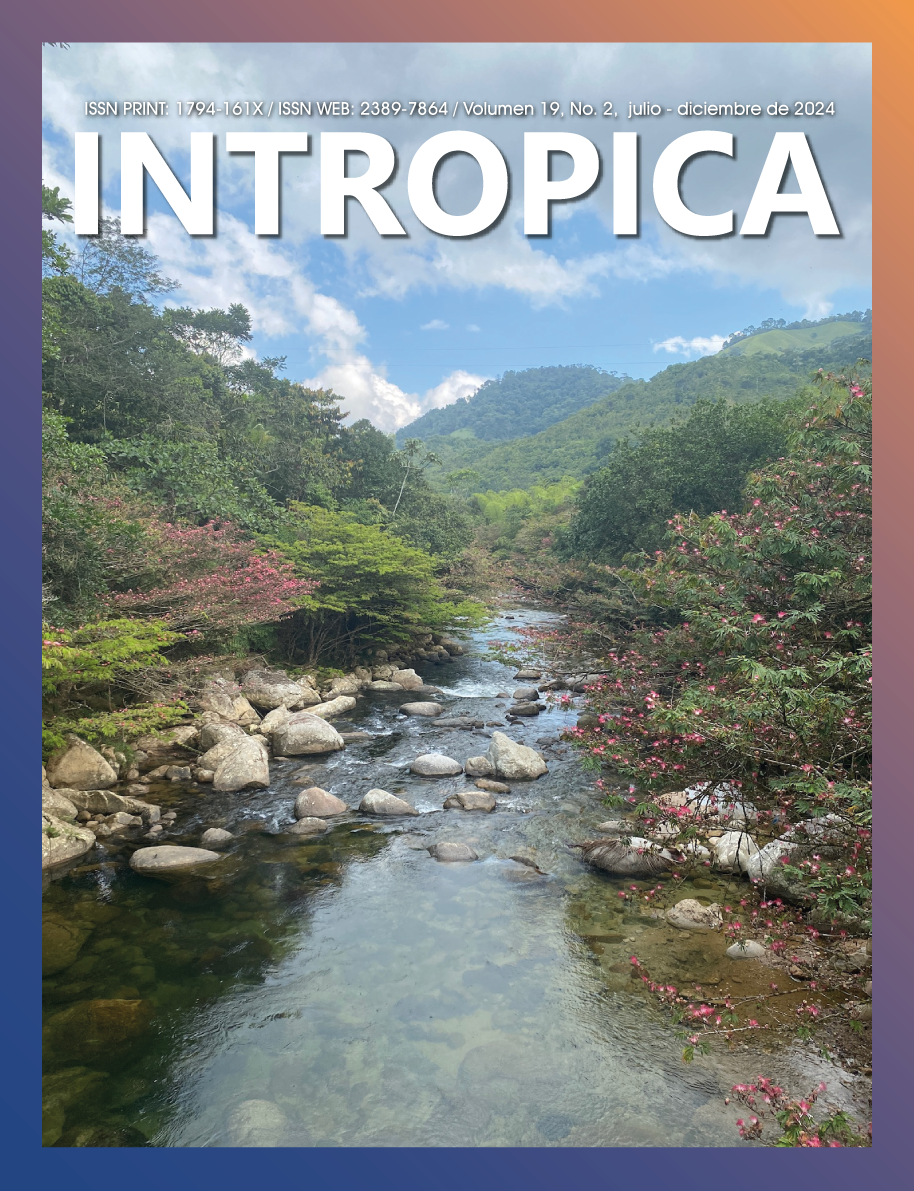Bullfrog growth parameters in continuous water-flow tanks systems on a commercial scale
Contenido principal del artículo
Resumen
Descargas
Detalles del artículo

Esta obra está bajo una licencia internacional Creative Commons Atribución-NoComercial-CompartirIgual 4.0.
Citas
Baer, A., Schulz, C., Traulsen, I., y Krieter J. (2011). Analysing the growth of turbot (Psetta maxima) in a commercial recirculation system with the use of 3 different growth models. Aquaculture International, 19:497– 511. https://doi.org/10.1007/s10499-010-9365-0
Braga, L. G. y Lima, S. L. (2001). Influence of environmental temperature on the bullfrog performance, Rana catesbeiana (Shaw, 1802) in the growing phase. Revista Brasileira de Zootecnia (30): 1659-1663. https://doi.org/10.1590/S1516-35982001000700001
Haddon, M. (2001). Modelling and quantitative methods in fisheries. Chapman and Hall. Boca Raton. 406p.
Hernández-López, C. H. y Hernández-Yau, J. A. (2023). Growth of bullfrog juveniles in continuous flow ponds as food security alternative for fishing communities. IPSUMTEC 6 (4). https://doi.org/10.61117/ipsumtec.v6i4.265
INAPESCA. Instituto Nacional de Acuacultura y Pesca. (2018). Carta Nacional Acuícola, edición 2012. (Statistical yearbook of aquaculture, 2012 editions). Mazatlán. También disponible en la página web: https://inapesca.gob.mx/portal/Transparencia/carta-nacional-acuicola.php
Islas-Ojeda, E., García-Munguía, A., Chávez-González, L., López-Gutierrez, M., Hernández-Valdivia, E. y García-Munguía, C. (2021). Sustainable production of bullfrogs (Lithobates catesbeianus) with reused water from a Biofloc system. Abanico veterinario ISSN 2448-6132. https://doi.org/10.21929/abavet2021.37
Jurado-Molina, J., Hernández-López, C. H. y Hernández, C. (2023). Evaluation of fish density influence on the growth of the spotted rose snapper reared in floating net cages using growth models and non-parametric tests. Ciencias Marinas, (49): e3253. https://doi.org/10.7773/cm.y2023.3253
Katsanevakis S, y Maravelias, C.D. (2008). Modelling fish growth: multi-model inference as a better alternative to a priori using von Bertalanffy equation. Fish and Fisheries 9(2):178–187. https://doi.org/10.1111/j.1467-2979.2008.00279.x
Kimura, D.K. (1980). Likelihood methods fos the von Bertalanffy growth curve. Fisheries Bulleting, 77:765-774.
Padilla-Cerezo, R., Castañeda – Rodríguez, P. y Ramírez-Orejel, J. (2022). Evaluación nutrimental de la dieta, calidad de la canal y carne de rana toro (Lithobates catesbeianus). Universidad Autónoma de Nuevo León. Investigación y Desarrollo en Ciencia y Tecnología de Alimentos.
Ricker, W. E. (1975). Computation and interpretation of biological statistic of fish populations. Bulletin of the Fisheries Research Board of Canada. 191.
reservorio oligotrófico tropical poco profundo (Estanque IAG), São Paulo, sureste de Brasil. Acta Limnologica Brasiliensia, 18(2), 165-180.
Ostenfeld, C. H. y Nygaard, G. (1925). On the phytoplankton of the Gatun Lake, Panama Canal. Dansk Botanisk Arkiv, Udgivet of Dansk Botanish Forening, 4(10), 1-16.
Ramírez, J. J. (1986). Fitoplancton de red en el embalse El Peñol, Colombia. Actualidades Biológicas, 15(56), 2-13.
Ramírez, J. J. (2000). Fitoplancton de agua dulce: aspectos ecológicos, taxonómicos y sanitarios. Editorial Universidad de Antioquia.
Rengefors, K. y Kremp, A. (2018). The ecology of freshwater dinoflagellates. En Ø. Moestrup y A. J. Calado (Eds.), Süßwasserflora von Mitteleuropa, Bd. 6-Freshwater Flora of Central Europe. Springer Spektrum.
Schiller, J. (1937). Dinoflagellatae (Peridineae) in monographischer Behandlung. En L. Rabenhorst (Ed.), Kryptogamen-Flora von Deutschland, Österreich und der Schweiz 2 Teil (pp. 1-589). Akademische.
Taylor, F. J., Hoppenrath, M. y Saldarriaga J. F. (2008). Dinoflagellate diversity and distribution. Biodiversity and Conservation, 17, 407-418. https://doi.org/10.1007/s10531-007-9258-3

